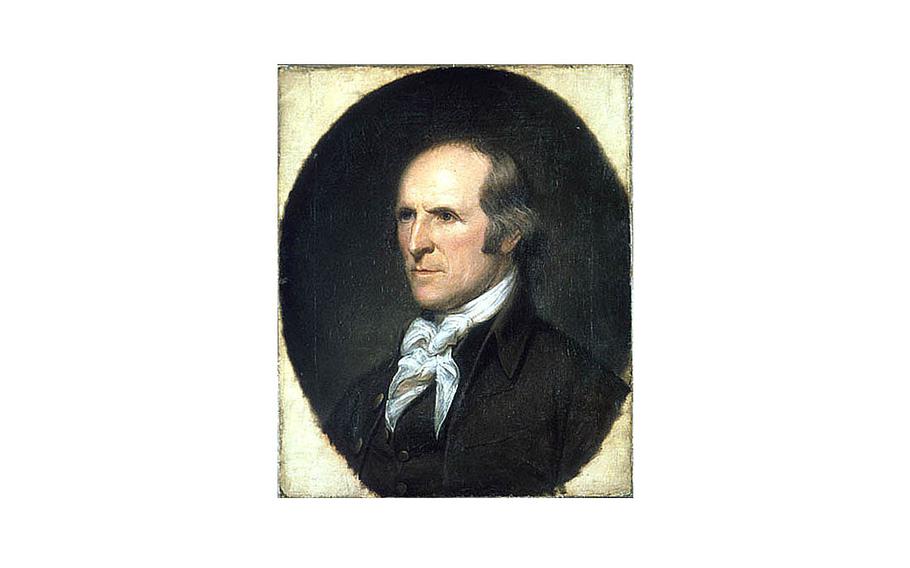
A portrait of Timothy Pickering by American painter Charles Willson Peale. (WikiMedia Commons)
SALEM, Mass. (Tribune News Service) — At the Pickering House on Broad Street, he’s known simply as “Col. Tim.”
Timothy Pickering is arguably one of the least appreciated of America’s “founding” fathers. Even in his own backyard.
A few may remember him as a footnote in the history books — the first U.S. Senator ever censured by Congress.
Or that despite distinguished service in the nation’s founding — as Gen. George Washington’s faithful adjutant general and quartermaster general of the Army during the Revolution, as secretary of state, postmaster general and as secretary of war — Pickering was ceremoniously kicked out of President John Adams’ Cabinet.
A member of a well-established Salem family, Pickering also served as a U.S. Senator and U.S. Representative and was one of the driving forces behind the Essex Junto, an alliance of New Englanders and other northerners, who reportedly sought succession from the slave-owning South.
When he died in 1829, Pickering was also among the last members of the nation’s first political party — the once-dominant Federalist Party that included Hamilton, Hancock and Adams.
But this month, Pickering will be honored as the author of “Pickering’s Plan,” the first-ever “American” militia drill manual that included numerous plates, charts and diagrams of, among other things, placement of the feet while drilling.
Pickering’s plan — a standardized, easy to understand manual of military drills — was swiftly adopted and turned the divergent militias into Washington’s Army.
“Commemorating Salem 1774 and Pickering’s Plan,” is scheduled to be Sunday, March 3, at 12:30 p.m., with Charlie Newhall and Bob Erbetta marshaling the discussion on the origins of a “well-regulated” militia and how Salem and Timothy Pickering helped shape the Second Amendment. It’s a special Essex County Revolution 250 event sponsored by Essex Heritage and partnering organizations.
Those on hand will undoubtedly hear the words of Col. Tim.
“I gladly embraced the opportunity which then presented, of applying to the service of my country the little knowledge & experience an office in the militia had led me to acquire, by writing the following plain rudiments of the military art,” Pickering wrote to George Washington in 1775.
The book, formally titled “An Easy Plan of Discipline of a Militia” came to be in Salem in 1774 when the Massachusetts Provincial government moved from Boston to Salem. Differing factions and the need for a practical manual for the militia to defend Salem led the lawyer-turned-colonel to simplify earlier regulations.
Newhall and Erbetta will highlight this turning point of the politics of Salem in 1774, focusing on Pickering’s role in reshaping the militia, and the coming of the American Revolution. Newhall, an Early American historian and history teacher at St. John’s Prep, will present the Salem story and Erbetta, a co-founder of Marblehead’s Glover’s Regiment in 1974 and an experienced reenactor, will walk through the manual of arms and drill of soldiers for viewers.
Essex County Revolution 250 is an initiative by Essex Heritage to promote the diverse stories of Essex County residents, free and unfree, during the American Revolutionary period.
(c)2024 The Salem News (Beverly, Mass.)
Visit The Salem News
Distributed by Tribune Content Agency, LLC.